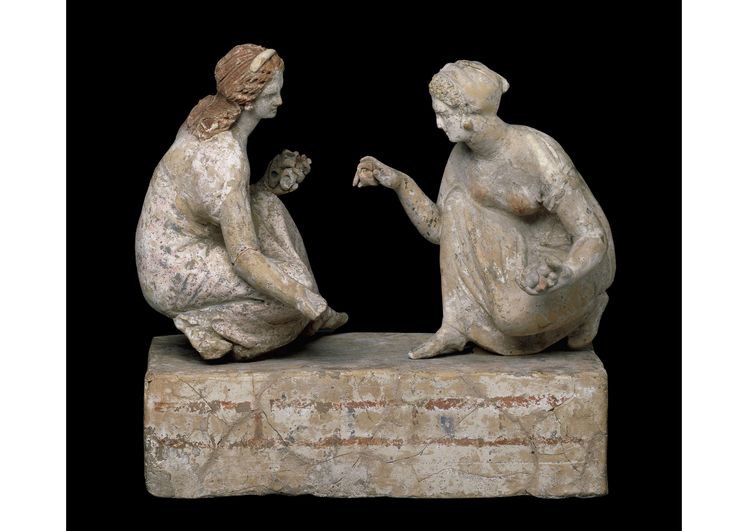Ancient Greek Adolescent Girls at Play

Annotation
This small (5.5 inches high) terracotta sculpture was made in Greek southern Italy in the late fourth century BCE. It depicts two adolescent girls playing the game of "knucklebones" (astragaloi in Greek). The game was usually played like the modern game of "jacks": one threw the knucklebones in the air and attempted to catch as many as possible. They were also used like modern "dice." Each of the four long sides of the knucklebone had a value: the convex side was worth 3, the concave 4, and the two flat sides 1 and 6. Most knucklebones were made out of the actual ankle bones of sheep or goats, but fancier ones were made of ivory, bronze, or terracotta. Children of both sexes, adolescent girls, and young women played knucklebones as revealed by statues like this one as well as paintings on vases.
This statue is both a depiction of a game and a representation of gender ideals. Whereas girls in the nearby city-state of Sparta were taught to read and write and engaged in athletic competitions, those in Athens spent their girlhoods largely indoors practicing the domestic arts (e.g., spinning, weaving, cooking, and childcare). Athenian girls typically married at the age of 15 or so and spent the rest of their lives engaged in household activities.
Credits
Image courtesy of the British Museum (GR 1867.5-10.1 (Terracotta D 161) http://www.britishmuseum.org/explore/highlights/highlight_objects/gr/t/group_of_knucklebone_players.aspx (accessed December 7, 2009). Annotated by Miriam Forman-Brunell and David D. Leitao.